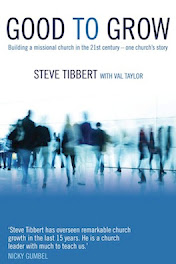To end this series of blogs on my book Good to Grow here are some snippets on a range of topics which I hope will give you an interest in reading more! If you are at the Brighton Conference the book will be available in the book shop.
The last but one quote in this series speaks of one of the costs of our journey – the final quote of the reason for what we do!
‘Too many churches move to multiple meetings too early, stalling momentum rather than creating it. The extra demands that multiple meetings place on staff members and committed volunteers need to be recognized when making such a decision.’
‘Leaders! We can be so familiar with the church we attend that we forget how uncomfortable it can feel walking into what is a strange environment, where everyone seems to know everyone else and understands all the unstated rules and protocols. Church can just seem downright bizarre to the unchurched person.’
‘Once a meeting room is regularly 80 per cent full, the number of new people coming along week by week will begin to drop off. Regular attenders won’t bring friends, family or work colleagues if it’s hard to find space for them.’
‘If your church has not grown for the last ten years, it is unlikely that dividing what you already have into two is going to help you.’
‘The loss of the luxury of flexibility to run over time is weighed against the benefit of reaching more people for Jesus.’
‘It is our continued experience that as we have provided more options and more space, God has given us more people.’
Good to Grow by Steve Tibbert is published by Authentic Media and is available from bookshops now. Order online from http://www.newfrontierstogether.org/Shop and enter the title of the book Good to Grow
Charismatic Gifts in Church History
3 weeks ago






